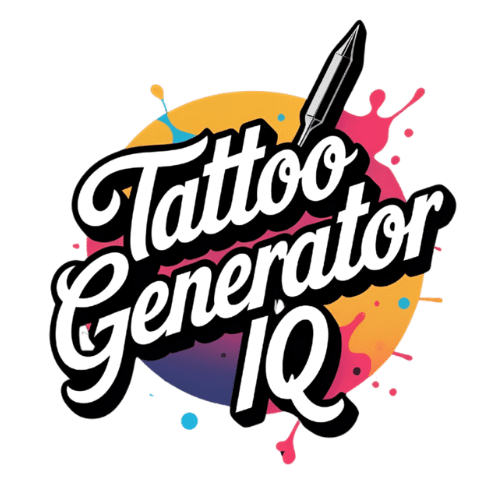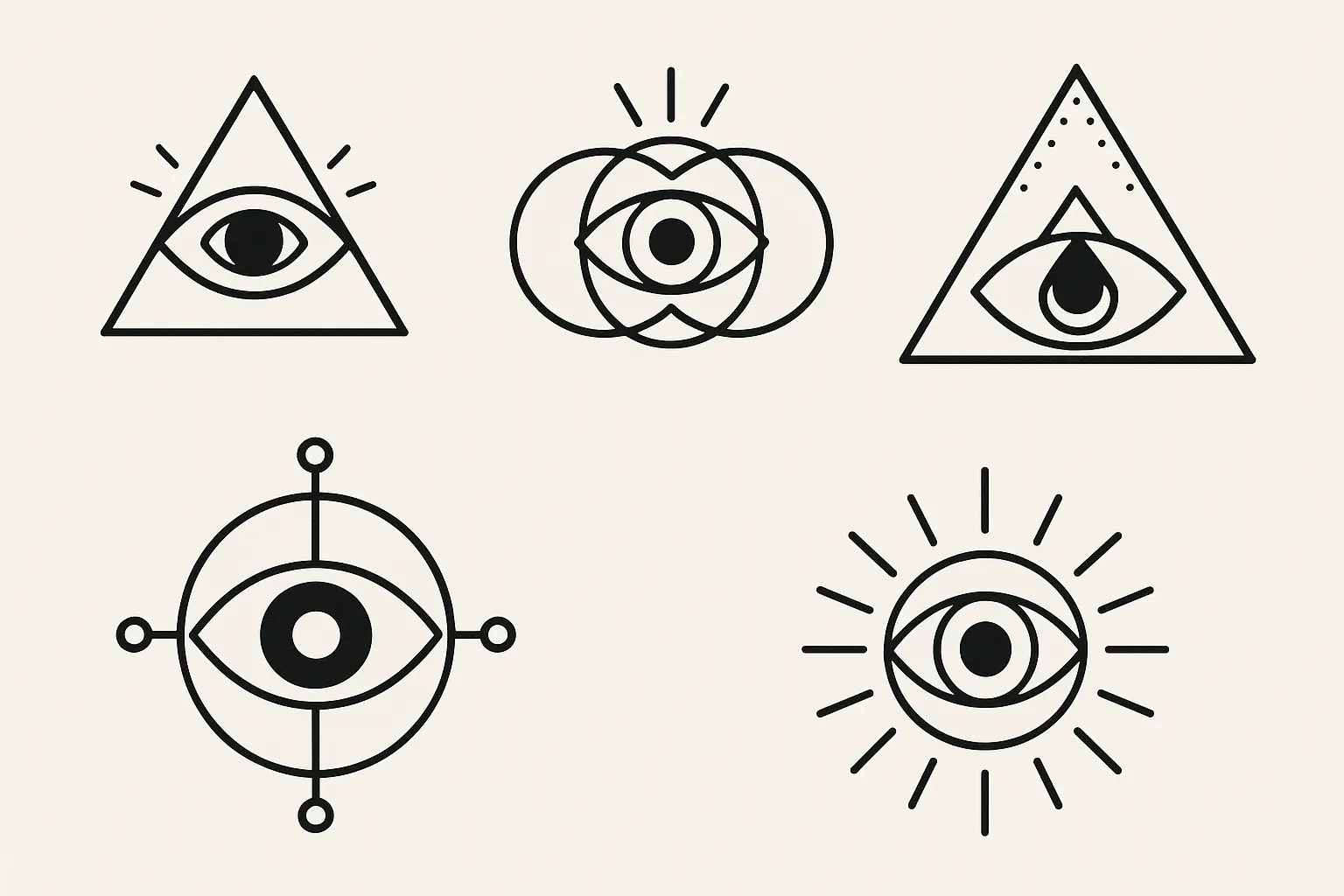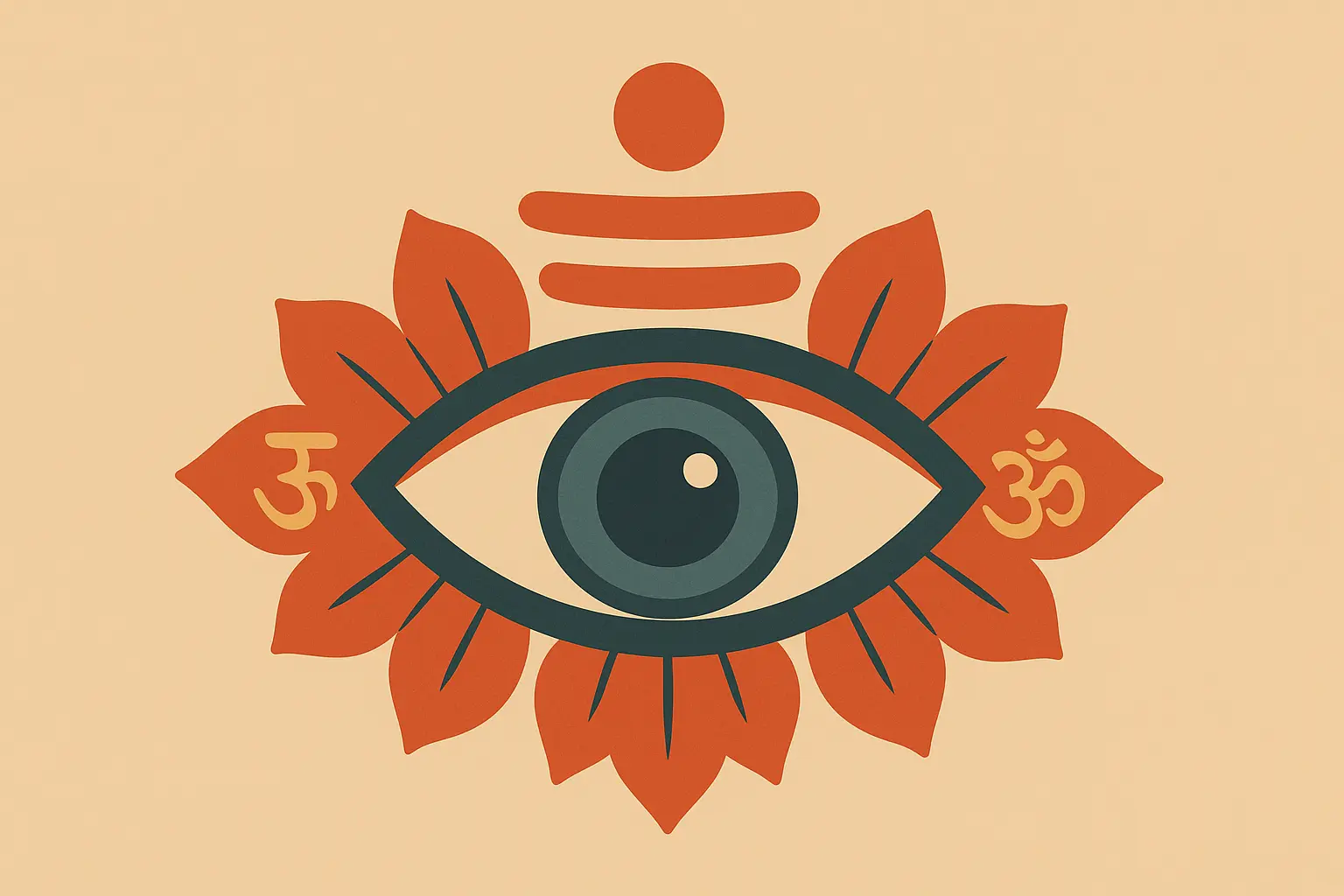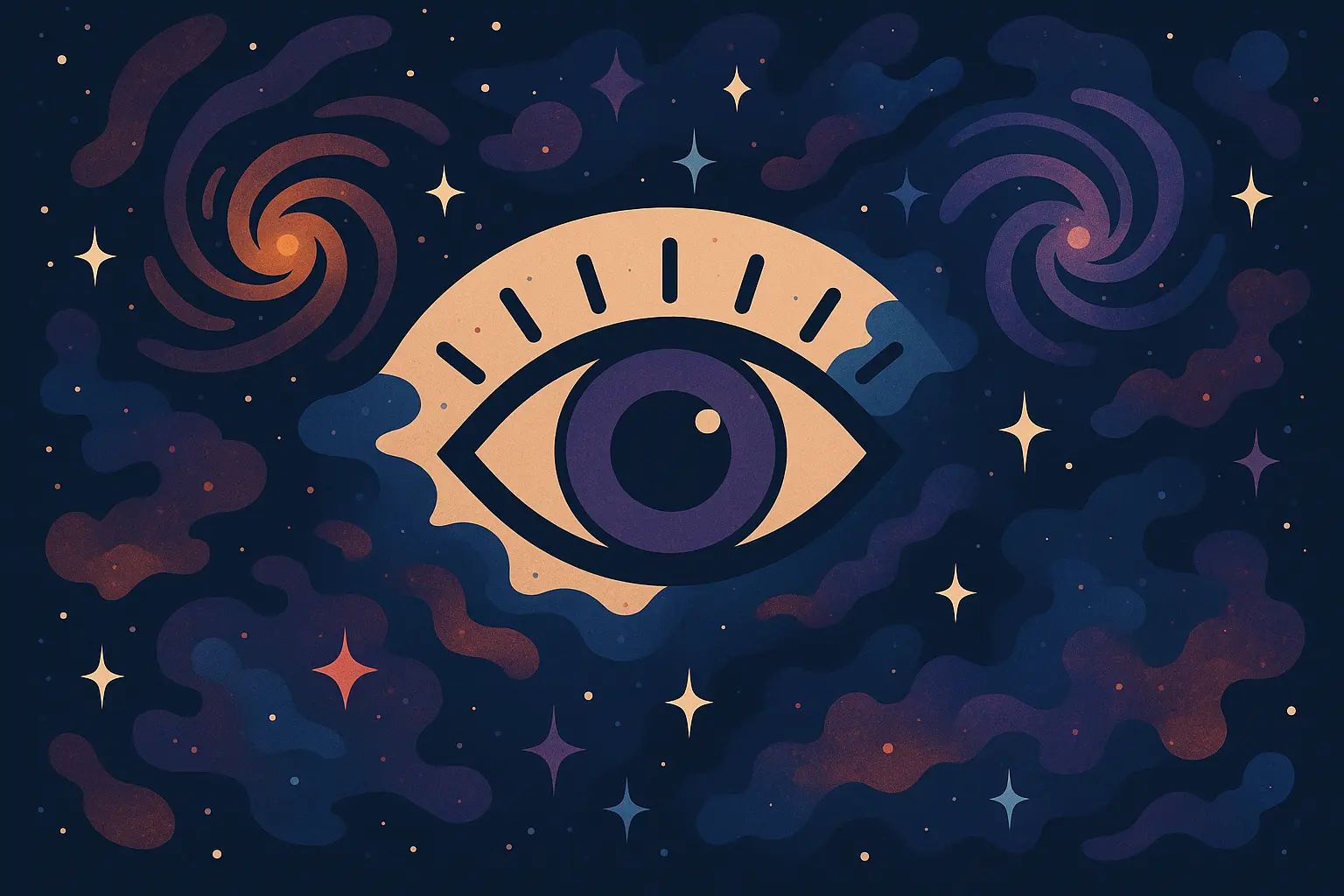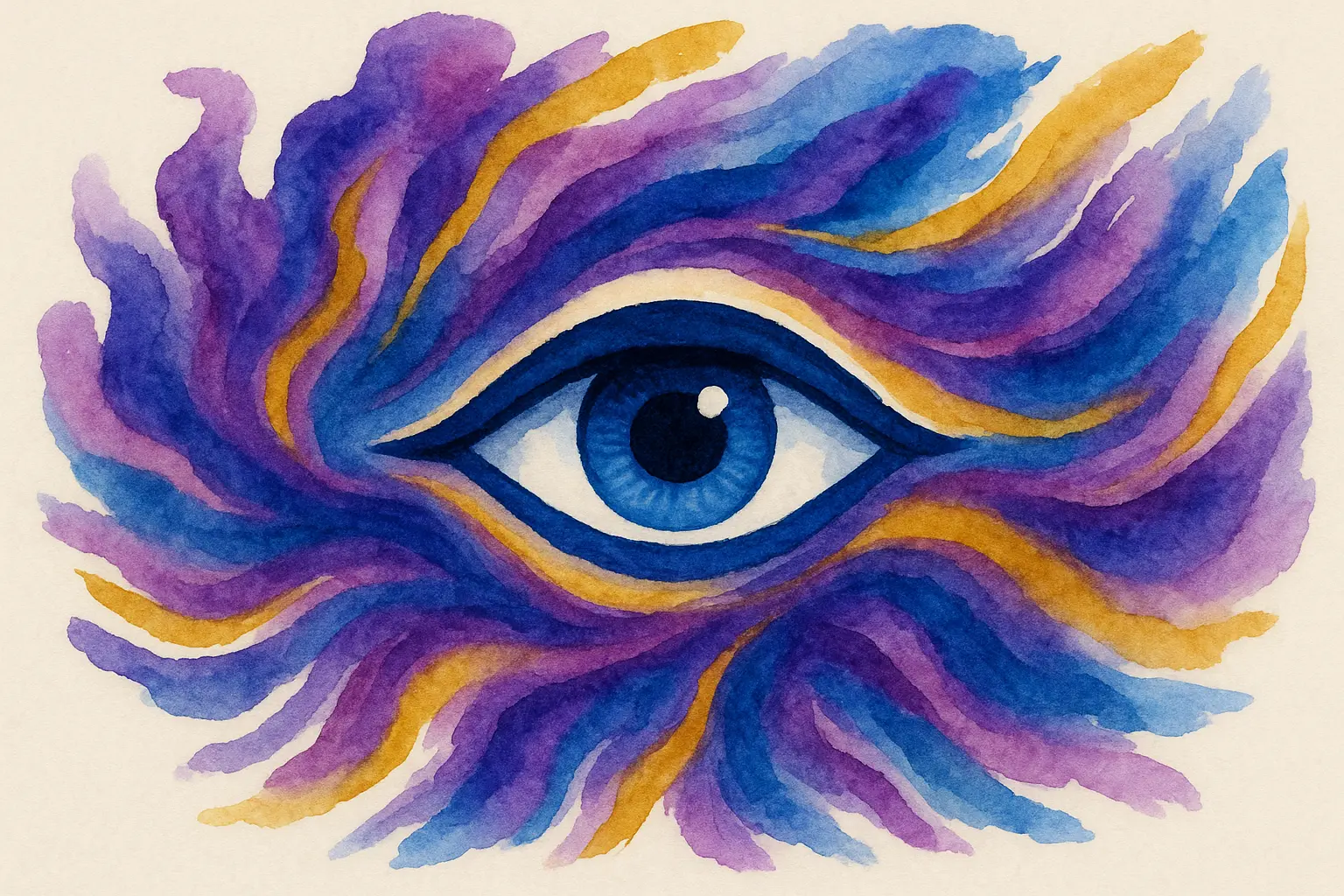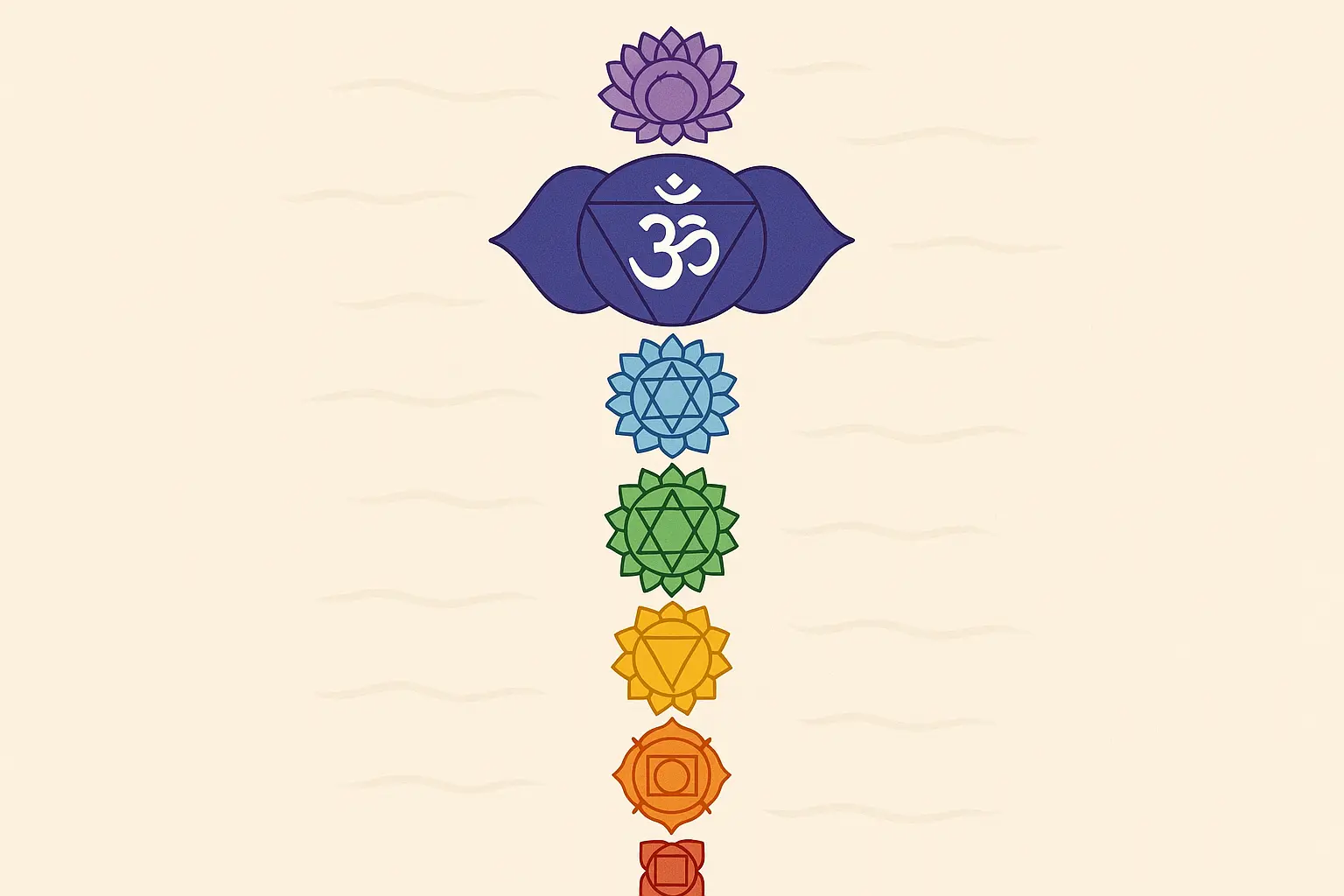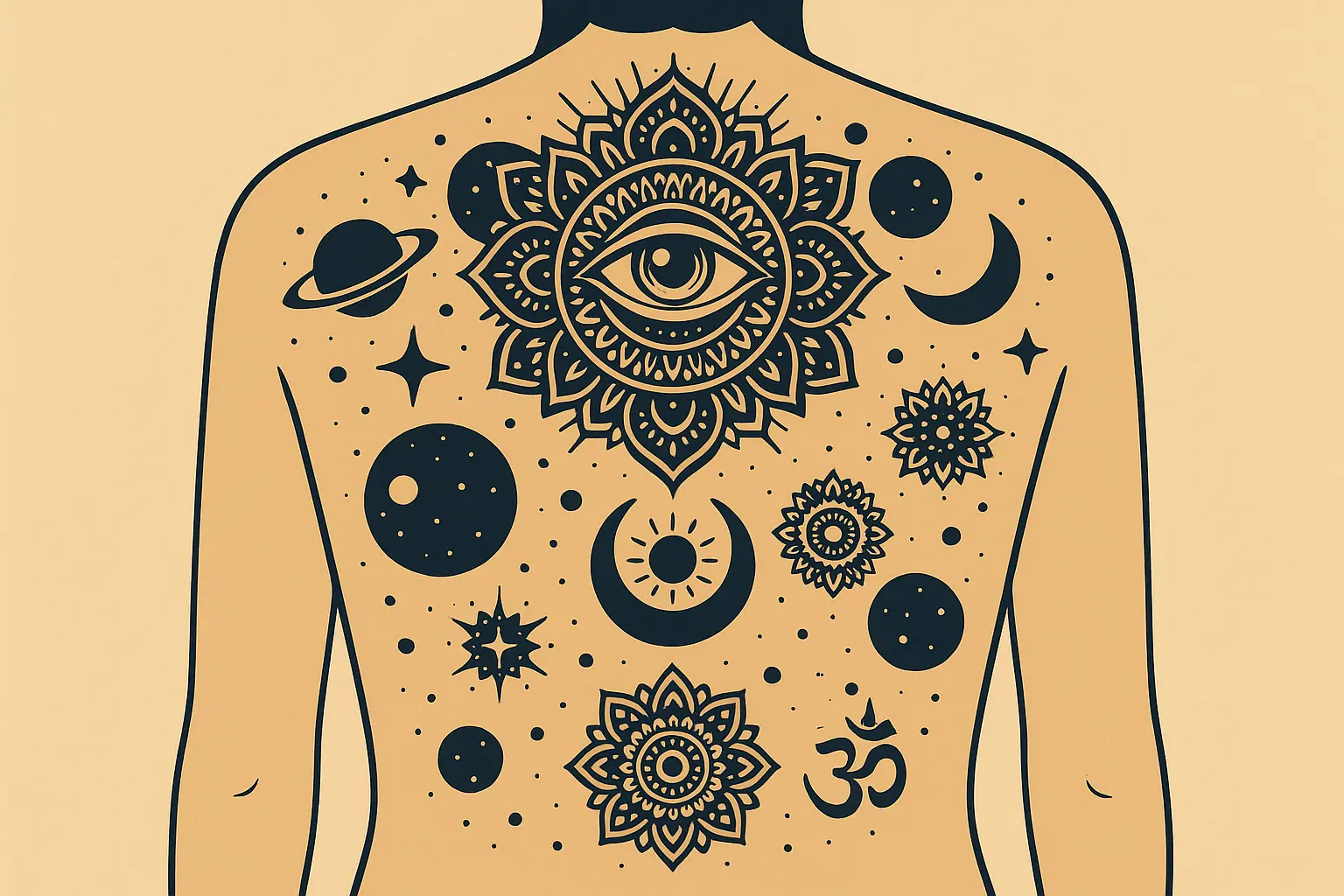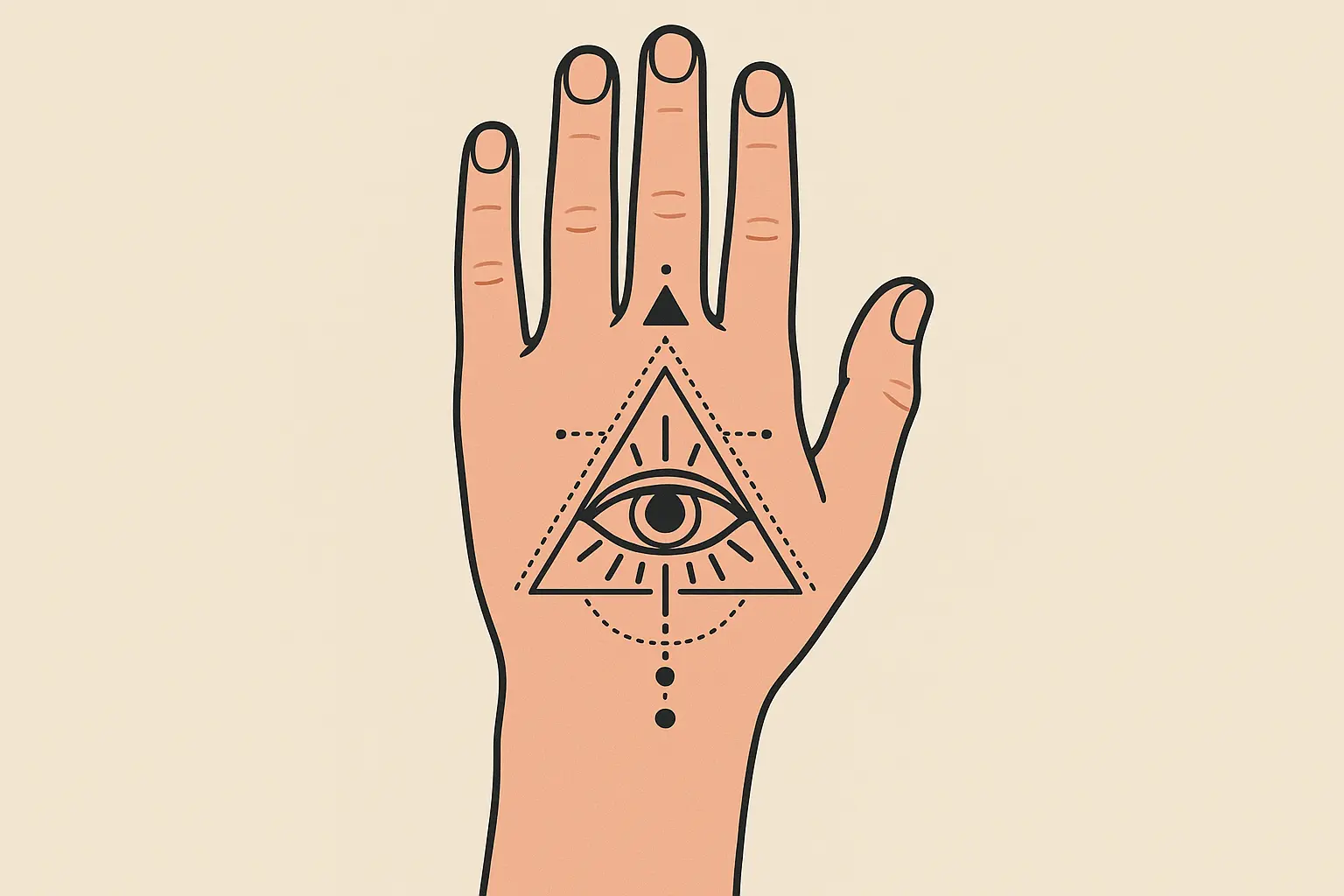25 Third Eye Tattoo Ideas That Will Awaken Your Inner Vision
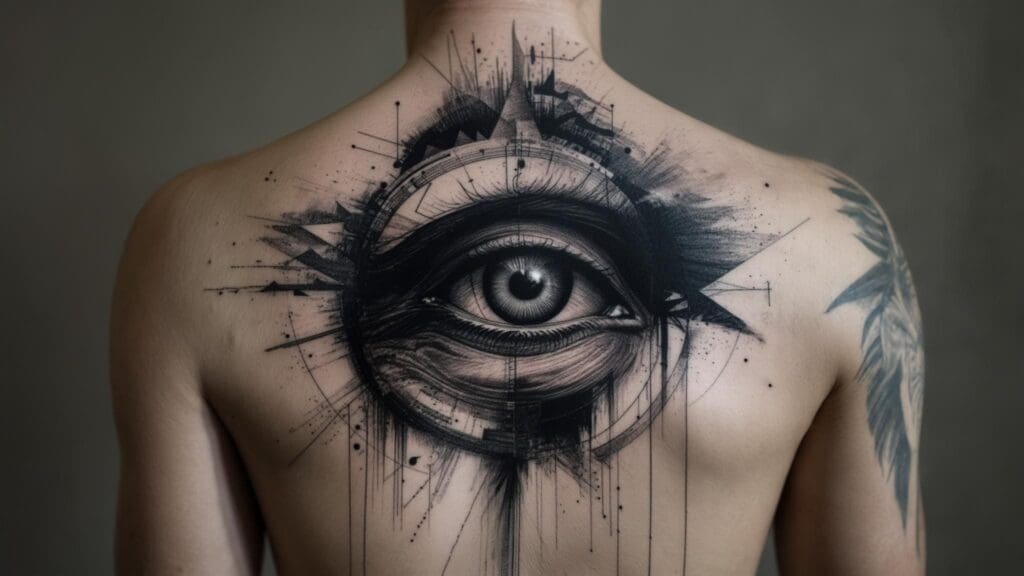
Third eye tattoos have become really popular lately – I mean, everyone seems to be talking about them. According to Inkbox’s spiritual tattoo research, search volume has jumped 287% in the past year alone. I’ll be honest – when my friend Sarah first told me about wanting a third eye tattoo, I thought it might just be a phase. But seeing how much thought she put into it, and how it genuinely connected to her meditation practice, really opened my eyes to how meaningful these can be.
The third eye is basically about your intuition and spiritual awareness – it’s that “sixth sense” feeling you get. Whether you’re drawn to simple geometric designs or want something more elaborate and cosmic, you’ll want to think about what it means to you, how complex you want it, and whether it fits your lifestyle.
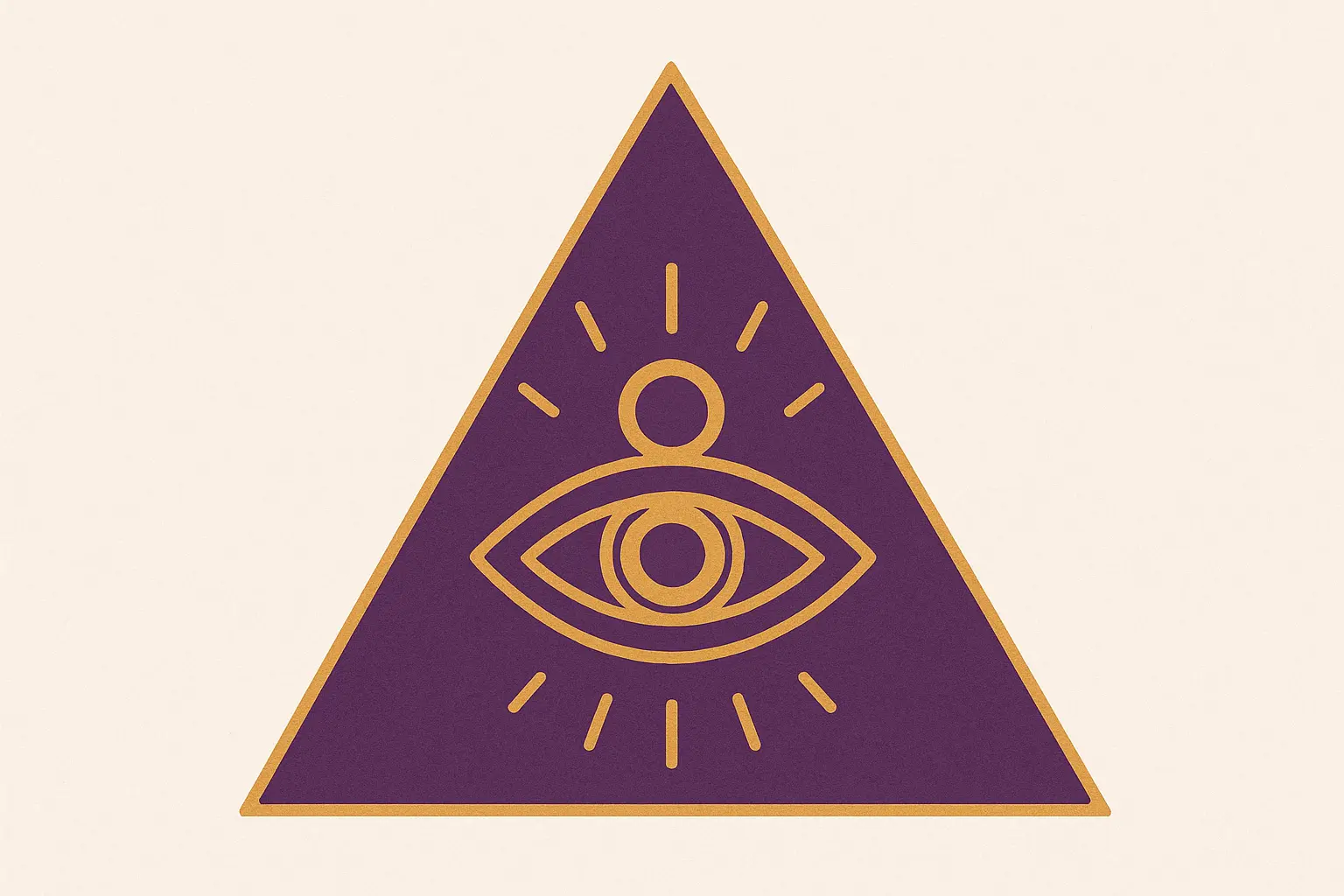
Table of Contents
-
Things You Need to Think About First (Trust Me on This)
-
Simple and Clean Third Eye Designs
-
Traditional and Cultural Third Eye Ideas
-
Nature and Cosmic Third Eye Elements
-
Artistic and Creative Third Eye Versions
-
Chakra and Energy-Focused Third Eye Designs
-
Placement Ideas and Large-Scale Designs
-
Real Talk: Which Designs Actually Work Long-Term
-
A Quick Word About Design Tools
-
Final Thoughts
TL;DR
-
Third eye tattoos are all about spiritual awareness, intuition, and that inner wisdom we all have
-
I’ve got 25 different designs here covering everything from super simple to elaborate cosmic scenes
-
You need to think about what it means to you spiritually, how complex you want to go, where to put it, and whether you’re respecting cultural traditions
-
Simple designs age the best and won’t get you in trouble at work, while detailed ones look amazing but need more upkeep
-
Forehead placement is bold but might mess with your career – other spots give you more flexibility
-
Don’t be the person who gets a Sanskrit tattoo without knowing what it means
-
Simple rule: you can always add more later, but you can’t take it away
Things You Need to Think About First (Trust Me on This)
Look, before you jump into getting a third eye tattoo, there are some things you really need to think through first. I’ve seen people rush into this and end up with regrets, so let me save you some headaches. We’re talking about spiritual meaning, how complex you want to go, where to put it, cultural respect, finding the right artist, and how it’ll work with any other tattoos you have or want.
What Does This Actually Mean to You?
The third eye isn’t just a cool symbol – it represents your sixth chakra and all that intuition and spiritual insight stuff. But here’s the thing: you need to really connect with what this means for YOUR journey, not just because it looks awesome on Pinterest.
Are you trying to boost your intuitive abilities? Going through some kind of spiritual awakening? Or do you just think it looks cool? I’m not judging any of these reasons, but being honest with yourself will help you choose the right design.
If you’re just starting to explore spirituality, maybe go simple. If you’ve been deep into meditation and energy work for years, you might want something more elaborate. The key is picking something that feels authentic to where you are right now, while leaving room to grow.
How Complex Do You Really Want to Go?
Here’s the deal with different designs:
Simple geometric stuff? Will look good for decades with barely any touch-ups. We’re talking 20+ years of looking fresh.
Watercolor and super detailed work? Beautiful, but you’ll be back in the chair every 5-10 years. Those fine lines and delicate colors don’t age as gracefully.
Traditional cultural designs and dotwork? Middle ground – they age well but might need some love after 10-15 years.
|
Design Type |
How Long It Looks Good |
Touch-Up Frequency |
Boss-Friendly? |
|---|---|---|---|
|
Simple Geometric |
20+ years |
Almost never |
Yes |
|
Dotwork/Mandala |
15-20 years |
Rarely |
Pretty much |
|
Watercolor/Realistic |
5-10 years |
Regular |
Depends |
|
Cultural Traditional |
10-15 years |
Sometimes |
Usually |
|
Large Scale/Cosmic |
10-15 years |
Sometimes |
Probably not |
Also, think about your pain tolerance and budget. Complex designs mean multiple sessions, which means more time, more money, and more sitting in that chair. Before you commit to a 15-hour cosmic masterpiece, maybe check out tattoo pain levels by body area to know what you’re getting into.
Where Are You Actually Going to Put This Thing?
This is where placement matters more than you think. Sure, putting it right on your forehead is the most literal interpretation, but let’s be real about forehead tattoos – they’re going to affect your job prospects. I’m not saying don’t do it, but know what you’re getting into.
Other spots like the back of your neck, between your shoulder blades, or on your forearm give you that spiritual vibe while keeping your career options open. Think about how different body areas will affect the design too – curved spots like shoulders can make flowing designs look amazing, while flat areas are better for geometric stuff.
Sarah’s Smart Move: Remember Sarah from the beginning? After five years in corporate finance, she went with the back of her neck, just below the hairline. She can cover it for board meetings but show it off during yoga class. Perfect balance of spiritual expression and professional flexibility.
The Cultural Appropriation Question (And Why It Matters)
Okay, let’s address the elephant in the room. The third eye comes from Hindu, Buddhist, and other Eastern spiritual traditions. If you’re not from these cultures, you need to approach this with genuine respect, not just because it looks cool.
Do your homework. Learn about what these symbols actually mean. If you’re incorporating Sanskrit symbols or traditional markings, make sure you understand what you’re putting on your body. Don’t be the person who gets a Sanskrit tattoo that actually says “chicken soup.”
If you don’t have a direct cultural connection, focus on universal spiritual interpretations or work with artists who can guide you toward respectful representation. The goal is honoring the tradition, not appropriating it.
Finding an Artist Who Actually Gets It
Finding the right artist is like dating – you’ll know when you click. Don’t just go with whoever’s cheapest or closest. This is going on your body forever, so it’s worth the drive to find someone who gets what you’re going for.
Look for artists who specialize in spiritual, geometric, or cultural tattoos. Check their portfolios for similar work – not just technical skill, but understanding of the symbolism. A good artist will ask you thoughtful questions about your spiritual connection and maybe even suggest design tweaks that enhance your concept.
Schedule consultations. If an artist doesn’t seem interested in the meaning behind your tattoo or just wants to slap a generic eye design on you, keep looking.
How This Fits with Your Other Tattoos (Or Future Ones)
Think about the big picture. How will this work with tattoos you already have or might want later? The cool thing about third eye tattoos is they often work great as part of larger spiritual themes – think lotus flowers, mandalas, or cosmic stuff.
The reason I always recommend starting simple? You can always add to it later, but you can’t take it away. A basic third eye can become the centerpiece of a full spiritual sleeve or back piece down the road.
Also consider visual balance. If you’ve got bold, dark tattoos elsewhere, your third eye might need similar weight to look cohesive. If your other work is delicate, maybe go with a more subtle approach.
Simple and Clean Third Eye Designs
If you’re new to tattoos or just prefer that clean, understated look, these five designs are perfect. They’re spiritually meaningful without being overwhelming, age incredibly well, and won’t get you weird looks at work. Plus, they’re a great starting point if you want to add more later.
1. The Basic Third Eye Symbol
This is your foundation – a clean triangle with an eye in the center, usually about 2-3 inches. The triangle represents mind, body, and spirit coming together, while the eye is all about seeing beyond the physical world.
Perfect for first-timers because it’s simple but meaningful. The bold lines will look good for decades with basically no maintenance. You can put it on your forearm, back of your neck, or between your shoulder blades and it’ll look great.
The beauty of starting simple is flexibility. You can always add rays, dots, or geometric patterns around it later without messing up the original design.
2. Sacred Geometry Third Eye
Think flower of life or Metatron’s cube surrounding a central eye. These mathematical patterns represent universal consciousness and divine order. Usually needs to be 4-6 inches to show all the detail properly.
Fair warning: this needs an artist who really knows sacred geometry. When done right, it’s mesmerizing. When done wrong, it’s just a bunch of wonky circles.
Different patterns mean different things. Flower of life is about creation and how everything’s connected, while Metatron’s cube represents the building blocks of the universe. Pick something that actually resonates with your spiritual understanding.
3. Dotwork Third Eye
This is where thousands of tiny dots create shading and mandala-like patterns around the eye. It’s an ancient technique that creates this unique texture and ages amazingly well.
Heads up: dotwork takes forever. We’re talking 6-10 hours for detailed pieces. But it’s worth it – these tattoos maintain their beauty for decades without needing touch-ups.
There’s something almost meditative about getting dotwork done. The rhythmic dot placement can put you in an almost trance-like state, which feels pretty appropriate for third eye symbolism.
4. Simple Line Third Eye
Clean, single-line work forming the eye shape with minimal shading. Very modern, very subtle. Great if you want spiritual symbolism without everyone asking what it means.
These work perfectly for small spots like wrists, behind ears, or fingers. Less ink means less pain and quicker sessions.
Just think about line thickness. Thicker lines last longer and stay visible, while ultra-fine lines might blur over time. Talk to your artist about what works best for your chosen spot.
5. Triangle Eye Design
A detailed eye sits inside a triangle, sometimes with small geometric elements around it. The triangle direction matters – pointing up represents masculine energy and fire, pointing down is feminine energy and water.
This gives you flexibility in how realistic you want the eye to be. You can go simple and geometric or more detailed, depending on your taste and artist’s skill level.
The triangle framework is perfect for future additions. You can add rays, dots, or other geometric shapes later without disrupting the original design.
Traditional and Cultural Third Eye Ideas
If you have a genuine connection to Hindu, Buddhist, Egyptian, or Celtic traditions, these four designs honor the authentic spiritual origins of third eye symbolism. Just remember – with great spiritual power comes great responsibility to do your research and be respectful.
6. Hindu-Inspired Third Eye
Traditional tilaka markings and Sanskrit symbols create authentic spiritual representation. Think lotus petals, om symbols, and those traditional forehead markings that complement the central eye.
But seriously, research tilaka patterns carefully. Different markings represent different Hindu traditions and deities. Vertical lines connect to Vishnu worship, horizontal lines to Shiva traditions. Don’t just pick what looks cool – pick what aligns with your actual spiritual understanding.
If you’re including Sanskrit, work with an artist who knows Devanagari script. You really don’t want to end up with a meaningful spiritual tattoo that accidentally says something embarrassing.
7. Buddhist Third Eye
Buddhist symbols like dharma wheels, lotus flowers, or Buddha silhouettes work beautifully with third eye imagery. These emphasize enlightenment, mindfulness, and the path to spiritual awakening.
The eight-spoked dharma wheel represents the Noble Eightfold Path, while lotus flowers symbolize purity rising from muddy waters. Pick symbols that actually connect to your Buddhist understanding and practice.
Colors matter in Buddhist tradition too. Gold represents wisdom and enlightenment, while deep blues and purples connect to meditation and spiritual depth. Talk to your artist about authentic color symbolism.
8. Egyptian Eye of Horus
Ancient Egyptian symbolism with that distinctive Eye of Horus design. The curved lines and falcon-inspired elements represent protection, royal power, and divine sight beyond the physical realm.
The Eye of Horus has specific proportional relationships based on ancient Egyptian mathematics. Each part represents fractions that add up to unity, symbolizing completeness and divine protection.
You could add hieroglyphic elements or Egyptian geometric patterns. Ankh symbols, scarab beetles, or pyramid imagery can complement the central eye while keeping the theme consistent.
Marcus’s Research Journey: Before getting his Buddhist third eye tattoo, Marcus spent six months studying Buddhist philosophy and visiting local temples. He learned that the specific blue he wanted represented the Medicine Buddha’s healing energy. His final design incorporated authentic dharma wheel proportions and traditional Tibetan color symbolism – honoring the tradition instead of just copying the aesthetic.
9. Celtic Third Eye
Intricate Celtic knotwork and spiral patterns surrounding the central eye, representing the connection between earthly and spiritual realms. Celtic spirituality is all about how everything in life is interconnected.
Celtic kn
Celtic knots have no beginning or end, symbolizing eternal life and spiritual continuity. Triple spirals represent the three realms of existence or the triple goddess, while four-fold knots connect to the elements and cardinal directions.
Celtic knotwork is complex and requires artists skilled in traditional Celtic art forms. Authentic designs follow specific mathematical principles and symbolic meanings that should be respected and accurately represented.
Nature and Cosmic Third Eye Elements
These four designs blend spiritual symbolism with natural beauty and cosmic wonder. Perfect if you feel your spiritual connection through nature, the cosmos, or those moments when you’re stargazing and feeling connected to something bigger than yourself.
10. Cosmic Third Eye
Stars, planets, galaxies, and cosmic dust effects surrounding the central eye, often with watercolor techniques for those nebula-like backgrounds. Great for people who connect spiritual awareness with universal consciousness and cosmic wonder.
Watercolor cosmic effects look amazing on Instagram, but they fade faster than you might expect. Just saying. You’ll need an artist skilled in color blending and atmospheric techniques.
Think about which celestial elements actually mean something to you. Saturn represents discipline and spiritual lessons, Jupiter symbolizes expansion and wisdom. The Milky Way can represent your soul’s journey through infinite possibilities.
11. Floral Third Eye
Lotus petals, roses, or other meaningful flowers framing the eye symbol. Lotus flowers are particularly perfect here since they represent purity and enlightenment rising from muddy waters – very third eye appropriate.
Different flowers mean different things. Roses represent divine love and passion, peonies symbolize honor and wealth. Pick flowers that actually resonate with your personal spiritual journey, not just what looks pretty.
For the best results, work with artists who understand flower anatomy and can create realistic petal structures and natural growth patterns that complement the spiritual symbolism.
12. Moon Phase Third Eye
Various moon phases surrounding or incorporating the eye symbol, representing cycles of spiritual growth and the connection between intuition and lunar energy. Perfect if you feel spiritually connected to lunar cycles and feminine divine energy.
Each moon phase has specific meaning. New moons represent new beginnings and setting intentions, full moons symbolize manifestation and spiritual culmination. Waning moons connect to release and letting go of what no longer serves you.
If you practice moon rituals or feel energetically affected by lunar phases, this design can serve as a permanent reminder of your connection to celestial rhythms.
13. Crystal and Mineral Third Eye
Amethyst, quartz, or other crystals known for enhancing psychic abilities integrated around the eye design. The geometric crystal formations complement spiritual symbolism while representing earth’s natural ability to focus and amplify energy.
Different crystals offer different spiritual properties. Amethyst enhances intuition and spiritual protection, while clear quartz amplifies energy and promotes clarity. Choose crystals that align with your actual spiritual goals and energy work practice.
Crystal formations follow specific geometric patterns that can enhance the overall design’s sacred geometry. Natural crystal clusters, points, and geometric forms create visual interest while maintaining spiritual authenticity.
Artistic and Creative Third Eye Versions
If you’re more about visual impact and personal artistic taste while still keeping the spiritual meaning, these four designs are for you. They use modern tattoo techniques and creative expression to put a contemporary spin on ancient spiritual symbols.
14. Watercolor Third Eye
Flowing color techniques create painterly effects around the eye, with purples, blues, and gold tones associated with the sixth chakra. The fluid colors represent how intuition flows and the boundless quality of spiritual perception.
Here’s the reality check: watercolor tattoos look incredible on Instagram, but remember those touch-ups add up. You’ll need an artist skilled in color theory and blending techniques, and the lack of black outlines means colors must be perfectly balanced to avoid looking muddy over time.
Think about color psychology when making choices. Purple connects to spiritual wisdom and psychic abilities, gold represents divine illumination and enlightenment, blue tones promote calm meditation and inner peace.
15. Realistic Eye Third Eye
Highly detailed, photorealistic human eyes with spiritual elements like halos, light rays, or energy patterns. This creates striking focal points but requires exceptional artistic skill to pull off properly.
Realistic eye work demands artists with portrait experience who understand eye anatomy. Iris details, reflection patterns, and eyelash placement must be precisely executed to achieve convincing realism.
Consider whose eye you’re representing. Some people choose their own eye for personal connection, while others prefer idealized spiritual eyes. Discuss reference photos and artistic interpretation with your chosen artist.
16. Surreal Third Eye
Dreamlike elements like melting features, impossible geometry, or optical illusions that challenge perception while maintaining the central eye focus. This appeals to people who see spirituality as transcending ordinary reality.
Surreal designs require artists comfortable with abstract concepts and unconventional imagery. The challenge is maintaining visual coherence while incorporating impossible or dreamlike elements.
17. Biomechanical Third Eye
Organic eye imagery combined with mechanical or cybernetic elements, appealing to those who see spiritual evolution as part of human technological advancement. Gears, circuits, and mechanical components integrate seamlessly with natural eye structures.
This fusion style requires artists skilled in both organic anatomy and mechanical design. The challenge involves creating believable integration between biological and technological elements without losing the spiritual essence.
Consider the philosophical implications of biomechanical spirituality. This design suggests consciousness and technology can evolve together, representing a modern interpretation of ancient wisdom adapted for the digital age.
Chakra and Energy-Focused Third Eye Designs
These four designs are perfect for yoga practitioners, energy healers, and serious spiritual students. They show the third eye’s role within the complete chakra system and its connection to spiritual energy flow and transformation.
|
Design Type |
What It Represents |
How Complex |
Best For |
|---|---|---|---|
|
Seven Chakra Setup |
Complete energy system |
Pretty complex |
Advanced practitioners |
|
Aura Energy Lines |
Personal energy field |
Medium |
Energy workers |
|
Kundalini Serpent |
Spiritual awakening |
Complex |
Kundalini practitioners |
|
Meditation Figure |
Contemplative practice |
Medium-complex |
Meditation enthusiasts |
18. Seven Chakra Third Eye
All seven chakra symbols integrated with the third eye prominently featured, often arranged vertically along the spine or in circular mandala formation. This comprehensive approach educates viewers about the complete energy system while emphasizing the third eye’s central role.
Each chakra needs accurate color representation and symbolic detail. Root chakra appears in red, sacral in orange, solar plexus in yellow, heart in green, throat in blue, third eye in indigo, and crown in violet or white.
Many clients appreciate having a permanent reference for chakra meditation and energy work, making this both spiritually meaningful and practically useful for ongoing practice.
19. Aura and Energy Lines
Energy radiating from the third eye appears as light rays, swirling patterns, or electromagnetic field representations, emphasizing the eye’s role in perceiving and projecting spiritual energy. These work particularly well for people who see or sense auras.
Energy patterns can follow various artistic interpretations. Some prefer geometric ray patterns, while others choose organic, flowing energy representations. The key is creating movement and dynamism that suggests active spiritual perception.
Color gradients enhance the energy effect. Starting with intense colors near the eye and fading to lighter tones creates depth and suggests energy dissipation into the surrounding spiritual field.
20. Kundalini Serpent Third Eye
A serpent rises toward the third eye, representing kundalini energy awakening and spiritual transformation through the chakra system. This powerful imagery appeals to those practicing kundalini yoga or experiencing spiritual awakening through energy work.
The serpent’s positioning carries symbolic weight. Coiled serpents represent dormant potential, while rising serpents suggest active spiritual transformation. Consider your current spiritual state when choosing serpent positioning.
Traditional kundalini imagery includes specific serpent characteristics. Three and a half coils represent the dormant state, while the serpent’s hood opening near the third eye symbolizes full awakening and spiritual illumination.
21. Meditation Third Eye
Figures in meditation poses with prominent third eyes create comprehensive spiritual imagery, often including mandala backgrounds or lotus positions to emphasize contemplative practice. These work well for dedicated meditation practitioners.
Consider the meditation pose’s cultural significance. Lotus position represents spiritual discipline and transcendence, while other poses carry different meanings. Choose poses that reflect your personal practice and understanding.
Background elements enhance the meditative atmosphere. Mandala patterns, sacred geometry, or natural settings can frame the central figure while adding layers of spiritual meaning and visual interest.
Elena’s Energy Work Integration: As a certified Reiki practitioner, Elena chose energy lines radiating from her third eye. She worked with her artist to create flowing patterns that matched the energy movements she experiences during healing sessions. The design includes subtle gradient effects that seem to pulse with life, perfectly capturing her connection to spiritual energy work.
Placement Ideas and Large-Scale Designs
These four options range from bold forehead placement to comprehensive back pieces, each requiring careful consideration of professional implications, social acceptance, and long-term lifestyle compatibility.
22. Forehead Third Eye
The most literal placement features small to medium-sized eye designs directly on the forehead, creating immediate recognition and powerful spiritual statement. This placement requires serious consideration of professional and social implications.
Let’s be real about forehead tattoos – they’re going to affect your job prospects. That forehead placement looks cool, but are you ready to explain it at every job interview? Consider your long-term professional goals and social environment before committing to this highly visible placement.
Size considerations are crucial for forehead placement. Too large appears overwhelming, while too small may lack impact. Most successful forehead third eye tattoos measure 1-2 inches, providing visibility without dominating facial features.
23. Back Piece Third Eye
Large-scale designs covering significant back area allow elaborate compositions incorporating multiple spiritual elements, cosmic themes, or complete chakra systems. This placement provides maximum artistic freedom and storytelling opportunity.
Back pieces require substantial time investment, often spanning 20-40 hours across multiple sessions. Budget accordingly for this significant financial and time commitment, typically spread over several months.
Consider the narrative flow across your back. Successful back pieces tell cohesive stories through connected imagery, with the third eye serving as either the central focus or culminating element in your spiritual journey representation.
24. Sleeve Integration Third Eye
Designed as part of full or half-sleeve compositions, the third eye works with other spiritual, cosmic, or nature elements to create cohesive storytelling through connected imagery. This approach allows gradual tattoo development over time.
Plan sleeve progression carefully. The third eye’s placement within the sleeve affects the overall composition and narrative flow. Consider whether it should serve as the centerpiece, starting point, or culminating element.
Sleeve integration allows budget flexibility. You can complete the third eye first and add surrounding elements over time, or develop the entire composition gradually through planned sessions.
25. Hand Third Eye
Placed on the back of the hand or palm, this highly visible placement makes bold statements about spiritual commitment and openness to intuitive guidance. Hand tattoos require special consideration due to their professional and social visibility.
Hand tattoos fade faster than other placements due to frequent washing and sun exposure. Expect more frequent touch-ups to maintain appearance, typically every 3-5 years depending on lifestyle factors.
I get it – you’re worried about what your parents will think. Will this look stupid when I’m 50? (Valid question, by the way.) Many professional environments prohibit visible hand tattoos, potentially limiting career opportunities. Weigh spiritual expression against practical considerations carefully. Understanding the financial commitment is essential, as detailed in our comprehensive tattoo pricing guide which breaks down costs by size, complexity, and placement.
Real Talk: Which Designs Actually Work Long-Term
Each third eye tattoo category performs differently when it comes to spiritual authenticity, professional compatibility, aging characteristics, and maintenance requirements. Here’s the honest breakdown to help you pick something that’ll work with your lifestyle, career goals, and long-term satisfaction.
|
Design Type |
Spiritual Authenticity |
Boss-Friendly |
How It Ages |
Maintenance |
|---|---|---|---|---|
|
Simple/Geometric |
Really good |
Very |
Excellent (20+ years) |
Almost none |
|
Traditional/Cultural |
The best |
Pretty good |
Good (15-20 years) |
Some |
|
Nature/Cosmic |
Great |
Pretty good |
Good (10-15 years) |
Some |
|
Artistic/Stylized |
Decent |
Depends |
Variable (5-15 years) |
A lot |
|
Chakra/Energy |
Great |
Pretty good |
Good (10-15 years) |
Some |
|
Large-Scale/Placement |
Good |
Not really |
Good (10-20 years) |
Some to a lot |
Spiritual Authenticity Reality Check
Simple designs score really well for spiritual significance while staying accessible to various spiritual levels. They work great for beginners or people who prefer subtle spiritual expression without overwhelming complexity.
Traditional cultural interpretations achieve maximum spiritual authenticity but require genuine cultural connection or extensive research to avoid appropriation. These offer the deepest spiritual meaning for those with authentic ties to Hindu, Buddhist, or other Eastern traditions.
Nature and cosmic elements score great for spiritual connection through universal symbols, appealing to those who find divinity in natural phenomena and cosmic wonder. These bridge earthly and celestial spirituality effectively.
Artistic and stylized versions offer beautiful aesthetic appeal but potentially prioritize artistic expression over traditional spiritual meaning. They work well for people who value contemporary interpretation over historical authenticity.
Professional Compatibility Breakdown
High professional compatibility includes simple designs on concealed areas, small geometric symbols, and subtle dotwork pieces that can be easily covered during work hours while remaining meaningful to the wearer.
Pretty good compatibility encompasses nature elements on forearms, small chakra symbols, and artistic interpretations in coverable locations. These may require strategic clothing choices but don’t completely prohibit professional advancement.
Not really compatible involves forehead placement, hand tattoos, and large visible cosmic designs that may impact career opportunities in conservative fields. Consider your industry’s tattoo policies before choosing highly visible placements.
Aging and Maintenance Real Talk
Excellent aging (20+ years) characterizes bold geometric designs, simple triangular compositions, and solid black linework that maintain definition and clarity over decades with minimal touch-up requirements.
Good aging (10-15 years) applies to dotwork patterns, nature elements with bold outlines, and chakra symbols that may require occasional touch-ups but generally maintain their appearance well over time.
Variable/high maintenance (5-10 years) includes watercolor effects, fine cosmic details, realistic eye work, and intricate mandala patterns that may need regular touch-ups to maintain their original vibrancy and definition.
Before you get excited about that intricate mandala design, think about your pain tolerance and budget for future touch-ups. Your Instagram feed might be full of cosmic watercolor tattoos, but remember – those touch-ups add up.
Artist Skill Requirements by Category
Basic skill level works for simple geometric shapes, basic linework, and small symbolic designs that don’t require advanced technical expertise or specialized knowledge of spiritual symbolism.
Intermediate skill covers dotwork techniques, nature elements, and basic mandala patterns requiring moderate technical ability and some understanding of spiritual imagery and symbolic representation.
Advanced skill becomes essential for realistic eye work, complex sacred geometry, cultural traditional designs, and large-scale compositions demanding exceptional technical ability and deep understanding of spiritual symbolism.
A Quick Word About Design Tools
Choosing the perfect third eye tattoo involves balancing spiritual significance, artistic beauty, and personal meaning – which can feel pretty overwhelming without proper guidance. There are AI design tools out there that can help you explore different options and create professional references to share with your tattoo artist.
These tools can be particularly helpful for understanding cultural significance and spiritual meaning behind different design elements, ensuring your choice reflects genuine understanding rather than just aesthetic appeal.
The key is using these as starting points for conversations with your artist, not final designs. Your tattoo artist’s expertise and understanding of how designs will work on your specific body and lifestyle is irreplaceable.
Our platform also helps you understand the complete cost breakdown for your chosen design, complementing the information in our small tattoo pricing guide which covers budget considerations for spiritual symbols.
Final Thoughts
Look, at the end of the day, this is your body and your spiritual journey. I’ve given you all the practical stuff to think about, but the most important thing is that it feels right to you. Take your time, do your research, and don’t let anyone pressure you into something you’re not 100% sure about. The third eye is all about inner wisdom, right? So trust yours.
Third eye tattoos represent way more than trendy spiritual symbols – they embody your personal journey toward higher consciousness, intuitive wisdom, and spiritual awakening. Whether you go with a simple geometric symbol for subtle spiritual expression or an elaborate cosmic composition telling your complete awakening story, make sure it genuinely resonates with your spiritual understanding and long-term goals.
What if I get tired of it? (Valid concern.) Remember that this permanent spiritual symbol will evolve with your consciousness over time. Choose designs and placements that support your growth rather than limiting your future possibilities. The perfect third eye tattoo serves as both artistic expression and spiritual tool, reminding you daily of your commitment to inner wisdom and higher awareness.
As third eye tattoos continue getting more popular, staying authentic becomes increasingly important. Do your homework, respect cultural origins, and work with skilled artists who understand the profound significance of this ancient symbol. Your spiritual journey deserves artwork that reflects its depth and meaning.
And hey – I’ve seen people rush into complex designs and regret not starting smaller. You can always add more later, but you can’t take it away. Start with something that feels right now, and let it grow with your spiritual journey.
